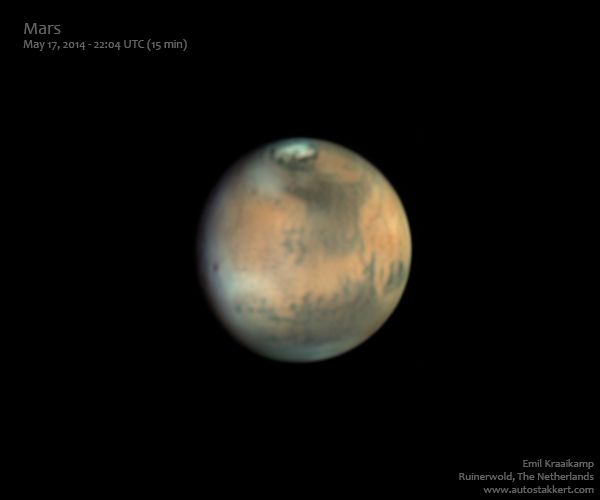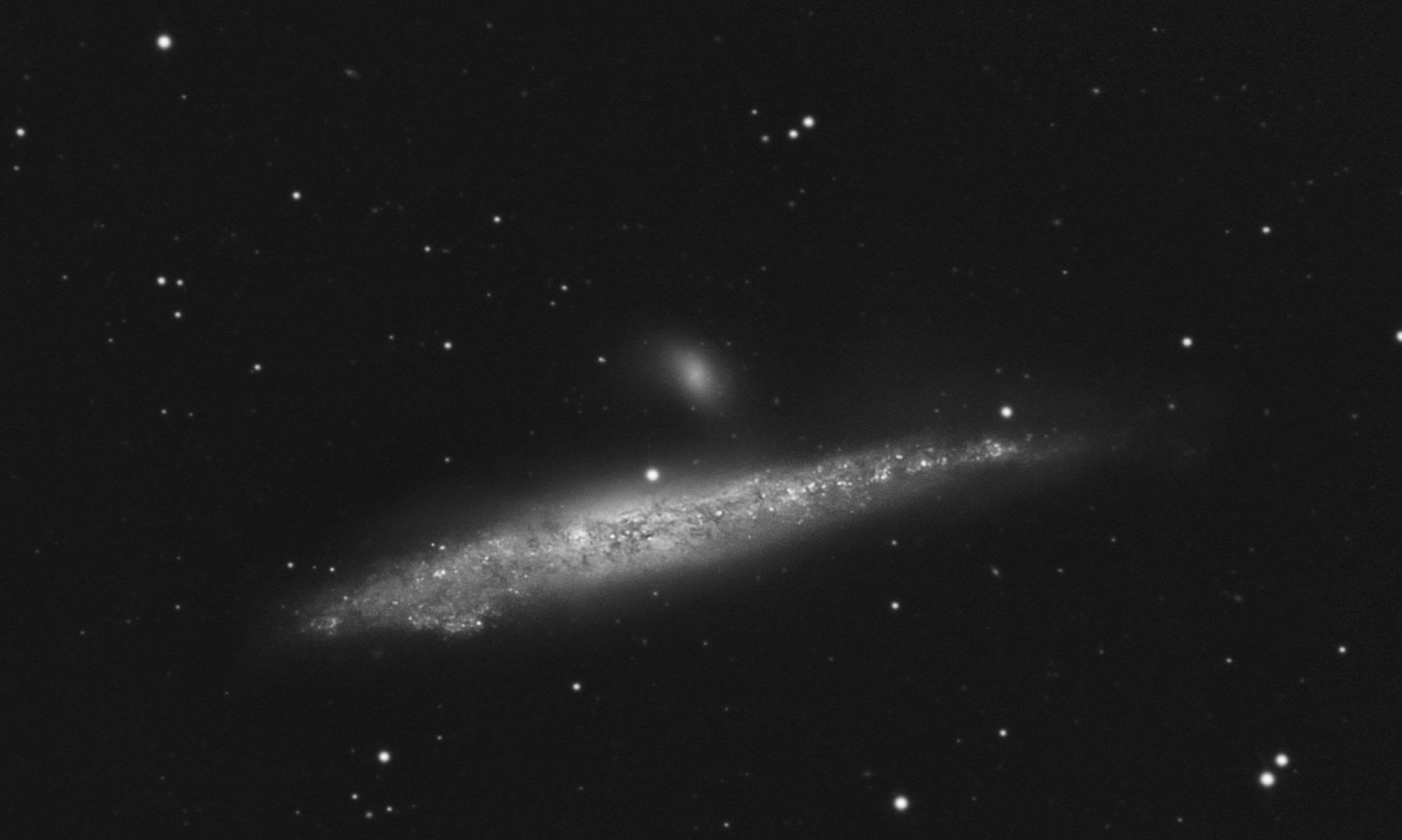Here is my latest result: Mars imaged on May 17 under pretty good conditions (well, for Dutch conditions of course). I still have some recordings left to process from the night before, and I’m really curious to see the changes in the results from one day to the next as the clouds on Mars can be pretty dynamic!

For this recording I used the ASI120MM monochrome camera (as usual) and some Baader color filters. Processing the data took quite some time: out of 50 recordings I wanted to select only the most promising ones to then further process using AutoStakkert!2. To this end, I first let AS!2 quickly batch-process all recordings using just a single alignment point and then manually previewed and selected the resulting stacks. The best recordings were then processed more carefully using AS!2. This is actually an often used ‘trick’ by planetary astrophotographers: not only do we perform lucky imaging within a recording, by letting AS!2 select and combine only the sharpest portions of frames, but also between recordings, where we basically select (or show!) only the best recordings out of hours of material.
Mars rotates once in about 25 hours, but if you record using a monochrome camera every color after each other, there is a small color displacement between the channels when you turn the images into a color image. Because the recordings I made were quite lengthy, and especially far apart in time, I used WinJUPOS to compensate for the planet rotation by derotating the stacked images. Using this technique, it is even possible to combine multiple recordings together to increase the signal to noise ratio (produce prettier images), or even get rid of some sharpening or diffraction related artifacts in high-contrast areas.
Anyway, lots of cool stuff can be seen in this image of Mars. The little dark dot on the center left for example is a large shield volcano Ascraeus Mons peaking through some water ice clouds. Also clearly visible is the north polar cap consisting mostly of water ice during summer.

Well, really cool image! I just started using this software after shooting with the DSLR 300+ frames of the bloody supermoon eclipse this morning at 3:3something am: I am already in love with it to bits. Even though I knew of its existence already, I had never tried it out, so I am still learning and as a result my output isn’t yet what I am hoping for—but I’ll get better.
Thanks Emil for such an amazing piece of software!
You’re welcome !
this is my first attempt to download any thing related to photography and astronomy.
i appreciate your helpful tips and the program.
i was directed to autostakkert by a you tube friend Chucks Astrophotography.
its very exciting to learn about this.
thank you very much.
Tommy @ Texas